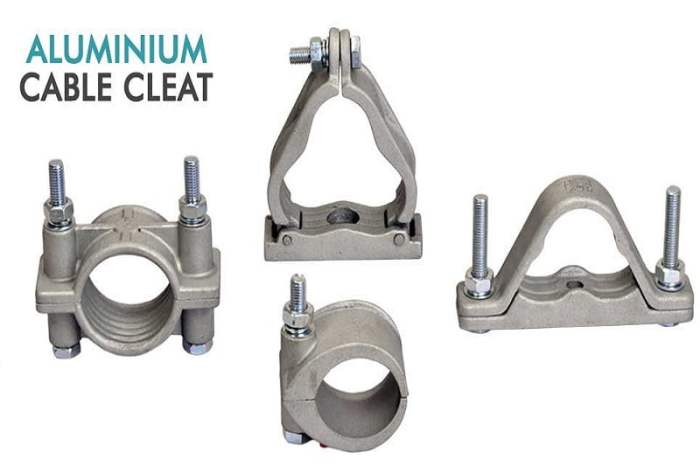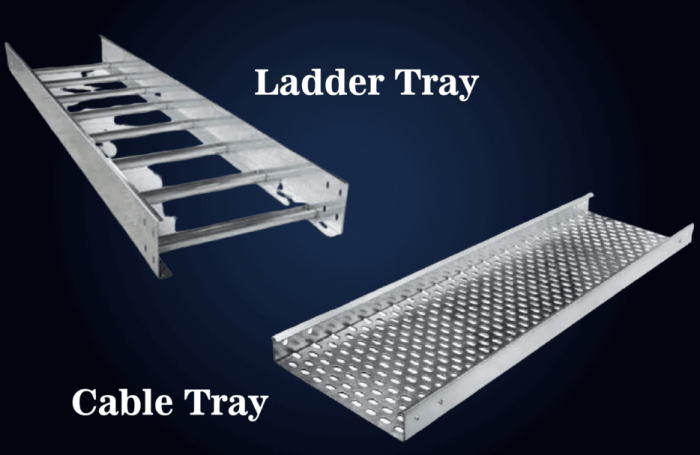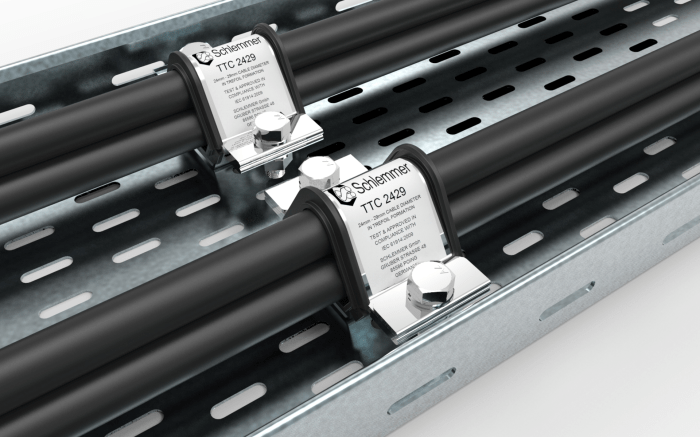Cable tray cable cleats are more commonly used for cables – Cable tray cable cleats, a ubiquitous component in electrical infrastructure, play a crucial role in securing and organizing cables within cable trays. These specialized devices offer a myriad of benefits, catering to diverse applications and ensuring the longevity and reliability of cable systems.
Cable tray cable cleats are meticulously designed to meet the specific demands of various industries, including data centers, manufacturing facilities, and commercial buildings. Their ability to effectively manage and protect cables in challenging environments makes them an indispensable tool for ensuring optimal cable performance and minimizing downtime.
Cable Tray Cable Cleats: An Overview

Cable tray cable cleats are essential components of cable management systems, providing secure and organized routing of cables within cable trays. These cleats play a crucial role in maintaining the integrity and functionality of electrical and communication networks in various industrial and commercial settings.
Cable tray cable cleats are designed to securely hold cables in place, preventing movement, strain, and damage. They are available in various types and sizes to accommodate different cable diameters and applications. The most common types include:
- Single-hole cleats: Designed for securing individual cables.
- Multi-hole cleats: Allow for multiple cables to be secured together.
- Snap-on cleats: Offer quick and easy installation without the need for tools.
- Hook-and-loop cleats: Provide adjustable and reusable cable management.
Using cable tray cable cleats offers numerous benefits, including:
- Improved cable organization: Cleats keep cables neat and organized, preventing tangles and clutter.
- Enhanced safety: By securing cables, cleats reduce the risk of tripping hazards and electrical accidents.
- Increased reliability: Proper cable management ensures optimal signal transmission and prevents network disruptions.
- Reduced maintenance costs: Cleats minimize cable movement and strain, extending the lifespan of cables and reducing maintenance requirements.
Applications of Cable Tray Cable Cleats
Cable tray cable cleats find widespread use in various industries, including:
- Data centers: For managing high-density cabling and ensuring reliable network performance.
- Telecommunications: To secure fiber optic cables and other communication lines.
- Industrial facilities: To organize and protect cables in harsh environments, such as factories and warehouses.
- Commercial buildings: For routing cables in office spaces, retail stores, and other commercial settings.
In each application, cable tray cable cleats play a critical role in ensuring:
- Proper cable routing: Cleats guide cables along designated paths, preventing interference and ensuring efficient signal transmission.
- Adequate cable support: Cleats provide support to cables, preventing sagging and damage caused by excessive weight.
- Compliance with regulations: Cleats help meet industry standards and regulations related to cable management and safety.
Installation and Maintenance of Cable Tray Cable Cleats

Proper installation and maintenance of cable tray cable cleats are essential for their effective performance.
Installation, Cable tray cable cleats are more commonly used for cables
- Choose the appropriate cleat type and size for the cable diameter and application.
- Position the cleat along the cable tray, ensuring it is properly aligned.
- Secure the cleat using screws, bolts, or other fasteners, depending on the cleat type.
- Tighten the fasteners to the manufacturer’s specifications.
- Insert the cables into the cleat and secure them according to the manufacturer’s instructions.
Maintenance
- Inspect cable tray cable cleats regularly for signs of damage or wear.
- Tighten loose fasteners as needed.
- Replace damaged cleats immediately.
- Clean cable cleats to remove dirt and debris that may interfere with their performance.
Design Considerations for Cable Tray Cable Cleats

When selecting and designing cable tray cable cleats, several factors must be considered:
- Load capacity: Cleats must be rated for the weight of the cables they will support.
- Environmental conditions: Cleats must be suitable for the temperature, humidity, and other environmental conditions of the installation.
- Cable diameter: Cleats must be sized appropriately for the diameter of the cables being secured.
- Cable routing: Cleats must be positioned to ensure proper cable routing and prevent interference.
Designing cable tray systems that incorporate cable tray cable cleats involves:
- Determining the cable load and selecting cleats with adequate load capacity.
- Choosing cleats that are compatible with the cable tray and environmental conditions.
- Spacing cleats appropriately to provide adequate support for the cables.
- Routing cables in a manner that minimizes stress and strain on the cleats.
Comparison of Cable Tray Cable Cleats to Other Cable Management Methods
Cable tray cable cleats offer several advantages over other cable management methods, such as:
- Cable ties: Cleats provide more secure and durable cable support compared to cable ties, which can become loose or break over time.
- Cable trays: While cable trays provide a convenient way to organize cables, they do not offer the same level of cable support as cleats.
The choice of cable management method depends on the specific application and requirements:
- Cable ties are suitable for light-duty applications where flexibility and quick installation are prioritized.
- Cable trays are ideal for organizing and routing large bundles of cables, especially in areas where accessibility is important.
- Cable tray cable cleats are the preferred choice for applications where secure and durable cable support is critical, such as in data centers and industrial facilities.
Essential FAQs: Cable Tray Cable Cleats Are More Commonly Used For Cables
What are the primary functions of cable tray cable cleats?
Cable tray cable cleats serve two main functions: securing cables to the cable tray and preventing cable movement, thereby protecting them from damage and ensuring optimal performance.
How do I choose the right cable tray cable cleats for my application?
Selecting the appropriate cable tray cable cleats depends on factors such as cable size, cable type, environmental conditions, and load capacity requirements. Consulting with an electrical professional or referring to manufacturer specifications is recommended.
What are the benefits of using cable tray cable cleats?
Cable tray cable cleats offer numerous advantages, including enhanced cable protection, improved cable organization, reduced installation time, and increased safety by preventing cable entanglement and potential hazards.